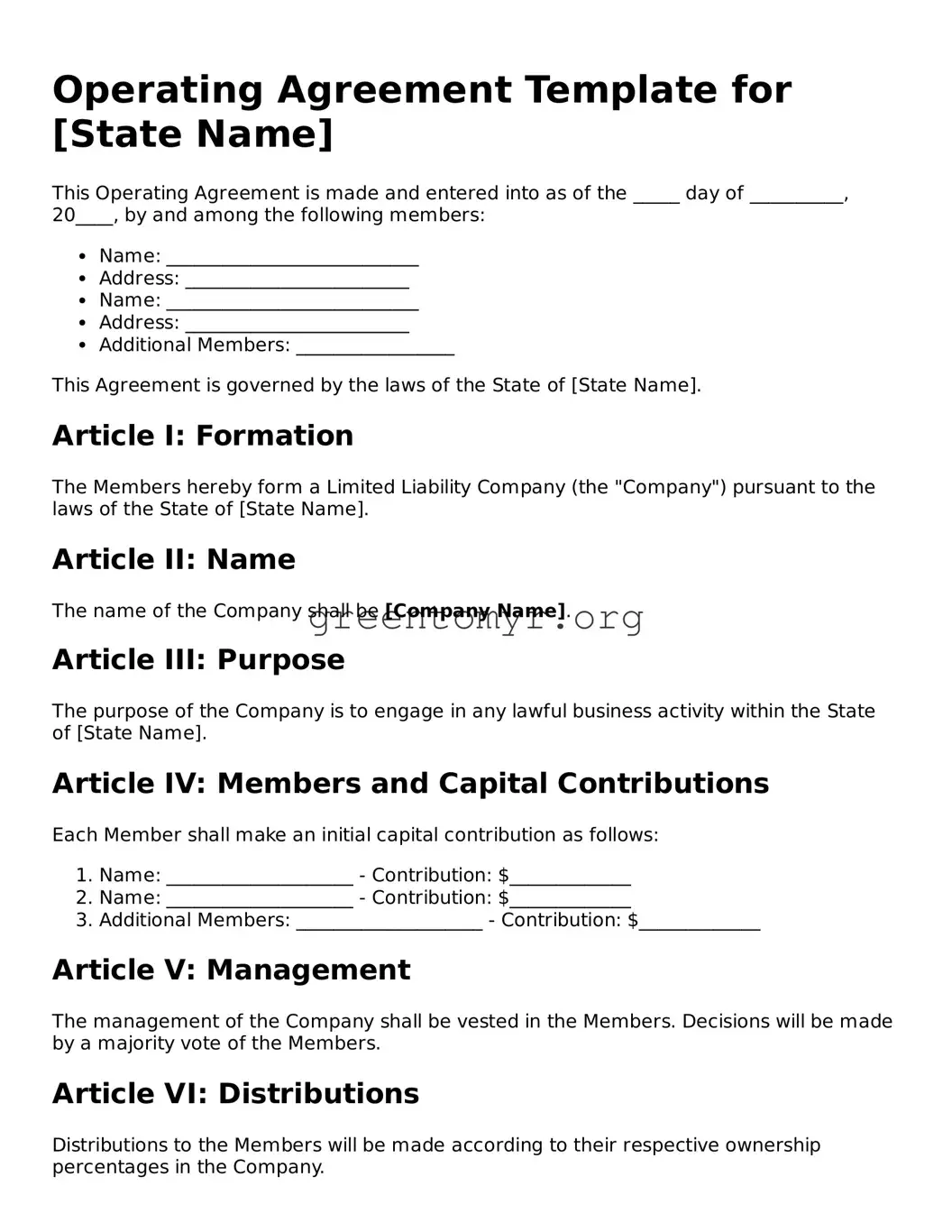Operating Agreement Template for [State Name]
This Operating Agreement is made and entered into as of the _____ day of __________, 20____, by and among the following members:
- Name: ___________________________
- Address: ________________________
- Name: ___________________________
- Address: ________________________
- Additional Members: _________________
This Agreement is governed by the laws of the State of [State Name].
Article I: Formation
The Members hereby form a Limited Liability Company (the "Company") pursuant to the laws of the State of [State Name].
Article II: Name
The name of the Company shall be [Company Name].
Article III: Purpose
The purpose of the Company is to engage in any lawful business activity within the State of [State Name].
Article IV: Members and Capital Contributions
Each Member shall make an initial capital contribution as follows:
- Name: ____________________ - Contribution: $_____________
- Name: ____________________ - Contribution: $_____________
- Additional Members: ____________________ - Contribution: $_____________
Article V: Management
The management of the Company shall be vested in the Members. Decisions will be made by a majority vote of the Members.
Article VI: Distributions
Distributions to the Members will be made according to their respective ownership percentages in the Company.
Article VII: Books and Records
The Company shall maintain complete and accurate books and records of its business and affairs.
Article VIII: Dissolution
The Company may be dissolved upon the unanimous consent of the Members. Upon dissolution, assets will be distributed in accordance with ownership percentages.
Article IX: Amendments
This Agreement may be amended only by a written agreement signed by all Members.
In witness whereof, the Members have executed this Operating Agreement as of the date first above written.
___________________________ (Member Signature)
___________________________ (Member Signature)
___________________________ (Member Signature)
